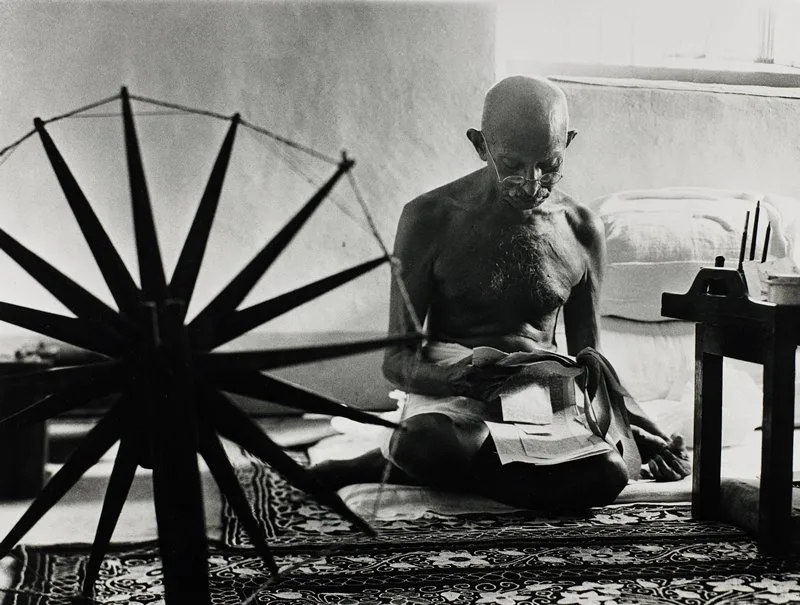Mahatma Gandhi, a name that echoes through the annals of history as a beacon of hope, a symbol of nonviolent resistance, and a tireless crusader for freedom and justice. His legacy continues to inspire generations worldwide, and his principles of truth, nonviolence, and selfless service have left an indelible mark on the fabric of humanity. This article delves into the life, education, movement, achievements, and sacrifices of the man who earned the reverence of a nation and the admiration of the world.
Table of Contents
Family Background and Early Life
Mohandas Karamchand Gandhi was born on October 2, 1869, in Porbandar, a coastal town in present-day Gujarat, India. He hailed from a middle-class family deeply rooted in Hindu traditions. His father, Karamchand Gandhi, was a moral man who served as the diwan (prime minister) of Porbandar and later of Rajkot. His mother, Putlibai, was a deeply religious woman who instilled in young Mohandas a sense of moral values and spiritual grounding.
Gandhi’s upbringing was influenced by the teachings of Jainism, a religion known for its emphasis on nonviolence, self-discipline, and asceticism. These early influences played a crucial role in shaping Gandhi’s later philosophy of nonviolent resistance, or what he famously termed “Satyagraha.”

Education and Early Career
A strong sense of dedication and discipline characterized Gandhi’s education. He went on to study law in London, where he was exposed to Western political and ethical thought. It was during this time that he developed an interest in civil rights and social justice issues.
Upon returning to India, Gandhi struggled to establish himself as a lawyer, but he soon found an opportunity to practice law in South Africa. It was in South Africa that he confronted the harsh realities of racial discrimination and segregation. These experiences ignited the fire of activism within him and set him on a path that would lead to the formation of his unique philosophy of nonviolent resistance.
The Birth of a Movement
Gandhi’s journey as a freedom fighter truly began in South Africa, where he launched his first campaign of nonviolent resistance against the oppressive treatment of Indians. He initiated various protests, strikes, and marches to demand civil rights for Indians living in the country. The most notable of these was the “Satyagraha” movement, which aimed to achieve change through nonviolent means, based on principles of truth, self-suffering, and active resistance.
This experience solidified Gandhi’s belief in the power of nonviolence as a weapon of the strong. He returned to India in 1915, bringing with him a wealth of experience and a renewed determination to fight against colonial rule.
Achievements and Sacrifices for the Nation
Gandhi’s achievements are numerous and profound, each contributing to the eventual liberation of India from British rule.
1. Champion of Nonviolent Resistance: Gandhi’s most significant contribution was his development of the concept of “Satyagraha” as a powerful tool for social and political change. He showed the world that nonviolence could be an effective means of resistance against oppression.
2. Salt March: One of the most iconic episodes of Gandhi’s movement was the Salt March in 1930. In protest of the British monopoly on salt production and distribution, Gandhi led a 240-mile march to the Arabian Sea, where he and his followers symbolically made their salt. This act of civil disobedience galvanized the masses and demonstrated the strength of unity in nonviolent action.
3. Quit India Movement: During World War II, Gandhi launched the Quit India Movement in 1942, demanding an immediate end to British rule. This mass protest marked a turning point in the struggle for independence, with millions of Indians participating in civil disobedience and facing brutal repression from the British authorities.
4. Role in Constitution Making: While often associated with civil disobedience, Gandhi also played a pivotal role in shaping of India’s future through the constitutional process. His influence ensured that the Indian National Congress, the leading political party at the time, remained committed to democratic principles and inclusivity.

5. Personal Sacrifices: Gandhi’s commitment to his principles was exemplified by his sacrifices. He embraced a simple, ascetic lifestyle, eschewing material comforts and dedicating himself to the service of his fellow countrymen. His unwavering commitment to truth and nonviolence inspired countless individuals to follow his lead.
Legacy and Enduring Impact
Mahatma Gandhi’s legacy extends far beyond the shores of India. His teachings on nonviolence, civil disobedience, and selfless service have inspired movements and leaders worldwide, including Martin Luther King Jr., Nelson Mandela, and Cesar Chavez. The principles he espoused have proven to be a potent force for social change, transcending borders, cultures, and generations.
Gandhi’s philosophy continues to resonate in a world grappling with conflicts, injustice, and inequality. His teachings remind us that lasting change can be achieved through empathy, dialogue, and the unwavering pursuit of truth.
In Conclusion
Mahatma Gandhi’s life is a testament to the power of individual actions to shape the course of history. His journey from a young lawyer to a global symbol of nonviolent resistance and freedom is a source of inspiration for all who seek to bring about positive change in the world. Gandhi’s legacy lives on through the countless lives he touched and the principles he stood for, serving as a guiding light for future generations striving for justice, equality, and peace.
